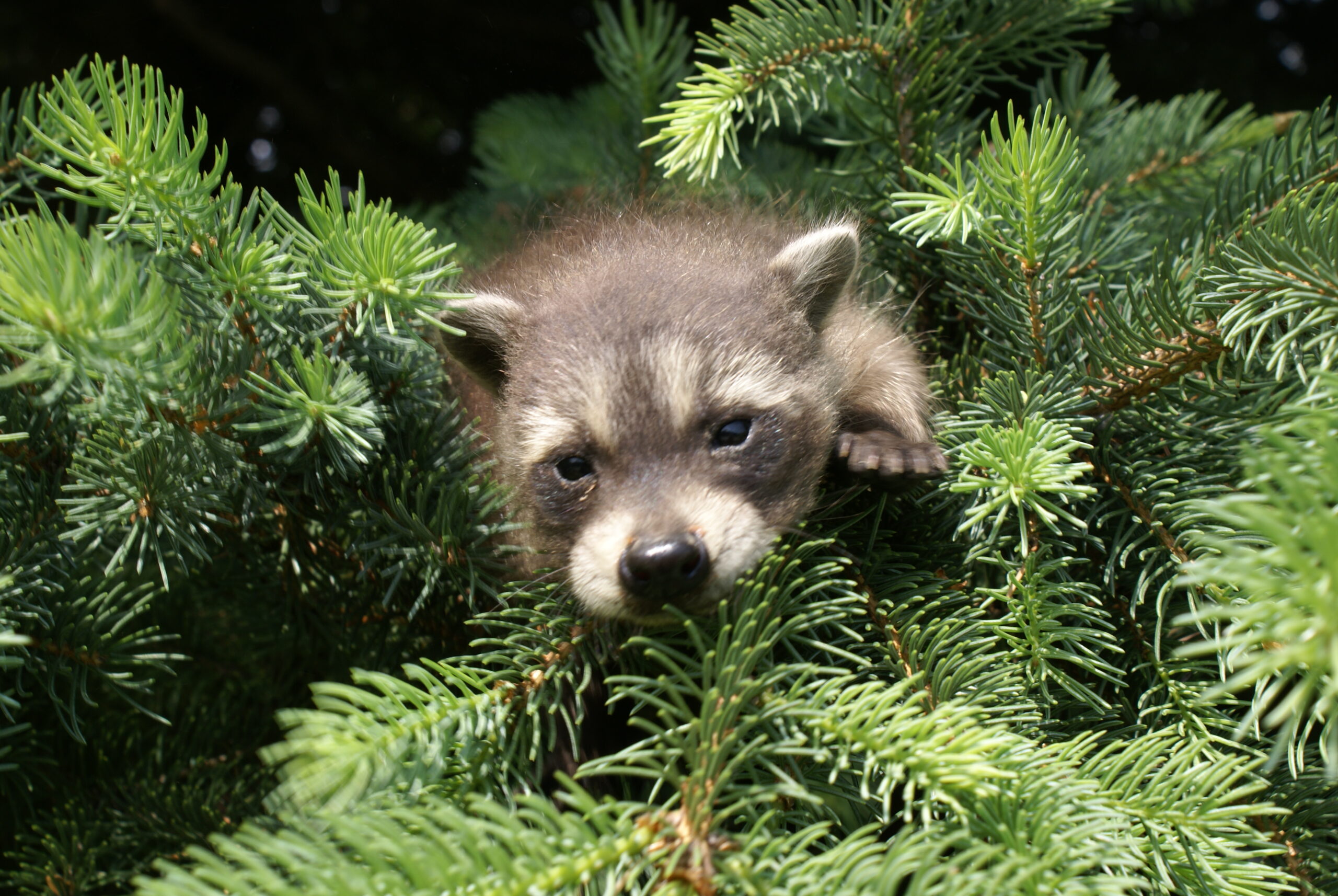If you wake up in the morning and find your garbage cans rolling around the front yard with trash strewn about, you can likely deduce that raccoons are to blame. Raccoon control in Madison, Wisconsin can help manage populations, but it can be difficult to keep these critters at bay since they are primarily active in the evening. It’s a rare occurrence to see them out during the daytime, making it a mystery to homeowners where raccoons reside when the sun is out. While many people believe that these masked bandits find trees to make their homes, they often take different residences closer to your home.
To Tree or Not To Tree
In the wild, once a raccoon has found a location that provides easy access to food and water, searching for shelter becomes the next priority. If you’ve seen one scurry through your neighborhood, you know that these animals are excellent climbers. It’s natural to think that they nest in trees since they seem so adept at gripping and maneuvering up and around treacherous terrain. While some intrepid climbers do find refuge in hollowed standing trees, it’s much more likely that they’re nesting much closer to the ground.
Raccoons are very aware when it comes to their safety, so when these nocturnal animals need to rest during the day or night, concealment is the primary concern. This makes trees an unlikely spot unless the trunk is large enough to conceal a mother and her family, they would be left exposed. It’s much more likely to find them hiding in repurposed holes whose tenants have moved on. Other great spots include spaces underneath larger stones, hollowed fallen tree trunks and even in piles of brush. When raccoons learn to adapt to the presence of humans, these housing habits are expressed in a number of different ways.
Opportunity Knocks
 City and suburban life can be difficult, especially if you’re a raccoon. Sustenance may be in abundance, but property is at a premium. Being creatures of the night, these animals have found excellent ways to cope with their human neighbors.
City and suburban life can be difficult, especially if you’re a raccoon. Sustenance may be in abundance, but property is at a premium. Being creatures of the night, these animals have found excellent ways to cope with their human neighbors.
Neglected buildings, accessible chimneys and even abandoned cars can be a mansion to these furry families. If they can crawl inside and feel relatively secure, they’ll find a way to make it their new home.
In the quiet peace of suburbia, it’s a little easier for raccoons to find some quality real estate. Crawl spaces, sheds and barns make perfect spots for a midday nap, especially if humans don’t often visit those areas. Attics are another great spot since they usually offer enough open space and warmth to prepare for a long winter. When human structures aren’t convenient, though, experts in raccoon control in Madison know they will turn to the trees and look for the same spaces some of their forest-dwelling brethren may choose.
Eviction Notice
If you’re tired of cleaning up yard garbage night after night and you’ve checked your house, barn and carport for signs of raccoon activity, it may be time to focus on the flora. Look at tree trunks for scratches that could be caused by their tiny claws as well as for obvious holes they may have nested in. Droppings around the base of trees is also a sign that there is a problem.
Upon seeing signs that raccoons are living in your trees, don’t try and climb up yourself to solve the problem. Waking a raccoon may be dangerous, especially if they are protecting their babies. Contact Skedaddle Humane Wildlife Control in Madison and let our team of professionals remove those backyard bandits.



